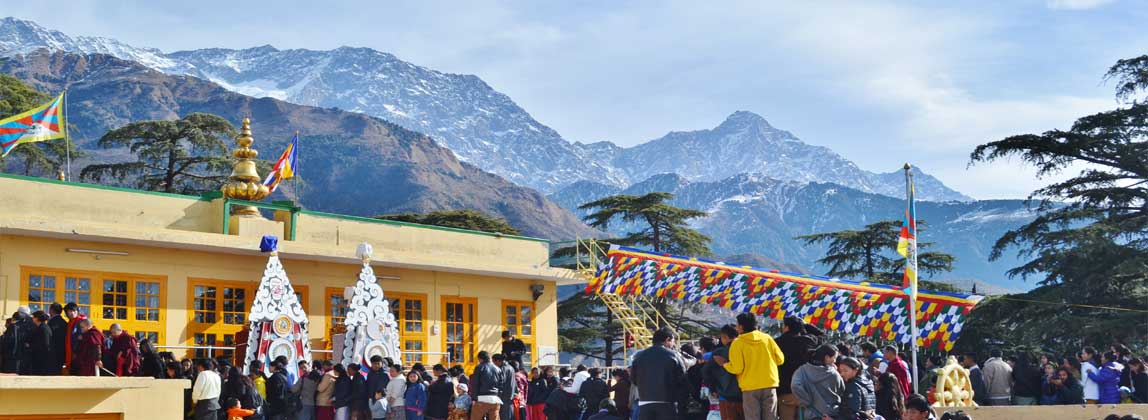


DHARAMSALA - It is a Hindi word and an approximate translation into English would be 'spiritual dwelling' or, more loosely, 'sanctuary'.
The hill station sits on a narrow ridgeline along the Dhauladhar range. Surrounded by pine forests, the grand Dhauladhar ranges tower like sheets of rock over Dharamshala, making this a great place for the adventure lover. Dharamshala town is roughly divided into two sections – the lower town with its traditional settlement and market areas and the upper town of McLeodganj, famous for its celebrity resident, His Holiness the Dalai Lama.
Founded by the British between 1815 and 1847, Dharamshala remained a low-profile hill town till the influx of Tibetan refugees along with the Dalai Lama. The influx of Tibetan refugees after Chinese occupation in 1959 changed all that. The Dalai Lama set up his temporary residence at McLeodganj, the upper town and has continued to stay here.
Tibetan Norbulinga Institute where Tibetans learn to paint the Thangkas, stitch garments and craft articles of wood. The museum close by is equally interesting. Thereafter visit to the Tibetan Astro institute (remains closed on Sunday and every second Saturday of the month), with its college, the library and the unique museum. The Tibetan government in exile is spread all over here.
Mc Leod Ganj and also the famous residence of Noble Laureate the 'Dalai Lama'. Dharamshala is divided into two distinct parts: lower Dharamshala the civil and business area with Courts and Kotwali bazar and upper Dharamshala composed of places like Mcleod Ganj and Forsyth Ganj
Bhagsunath Temple, a medieval temple, is one of the chief attractions of McLeodganj. Located at a distance of 3 km from middle of the town, the temple is a revered place for Hindus and the Gorkha community. Two pools in the temple complex is also an attraction. This shrine was a patronage place for a section of Gorkhas rulers, known as Bhagsuwalas after Lord Bhagsunag. These rulers built two magnificent water tanks with tiger-head water spouts along with a beautiful double-storey wooden rest house for pilgrims.